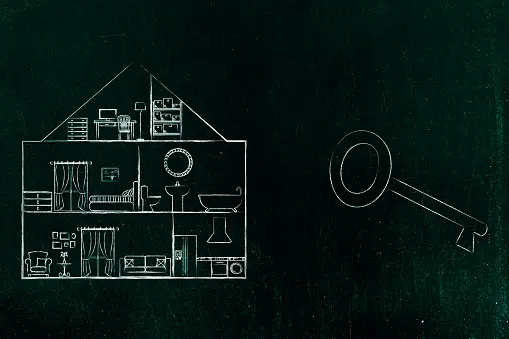Imagine your perfect home, designed for your every need, from a sunlit kitchen to a cozy living room for family gatherings. Custom-built homes are increasingly popular, allowing homeowners to create spaces that reflect their lifestyles. This blog post outlines essential steps and considerations for building your dream home, preparing you for an exciting journey.
Planning Your Dream Home
Defining Your Vision
Every successful project starts with a clear vision. Begin by outlining your priorities and what you want in your home. Create a list of must-haves and nice-to-haves. Think about the kind of lifestyle you envision. Do you need a large backyard for kids or pets? Is a spacious kitchen for entertaining guests a priority? Envision your daily routines and how your home can complement and enhance your lifestyle.
Setting a Budget
Budgeting is fundamental when planning your dream home. Determine how much you are willing to spend and include a buffer for unexpected costs. Be realistic about what you can afford. Get quotes from contractors and suppliers to understand the expenses involved. Prioritize your spending by focusing on the elements that add the most value to you.
Finding the Right Location
Location is everything. Consider the neighborhood, proximity to work, schools, and amenities. Research the area’s future development plans to ensure a sound investment. Visit the site at different times of the day to get a feel for the environment. Make sure the location aligns with your lifestyle and long-term goals.
Choosing the Perfect Design
Architectural Styles
The design stage is where your vision begins to take shape. Choose an architectural style that resonates with you. Whether it’s a modern minimalist look, a charming cottage feel, or a classic colonial design, make sure it reflects your personality. Explore different styles and gather inspiration from magazines, websites, and model homes.
Innovative Design Trends
Stay updated with innovative design trends that can add a touch of contemporary flair to your home. Open floor plans, smart home technology, and multifunctional spaces are popular choices. Consider integrating elements that promote wellness, such as natural lighting, biophilic design, and outdoor living areas.
Balancing Aesthetics with Functionality
While aesthetics are important, functionality should never be compromised. Ensure that the design meets your practical needs. Think about the flow of the house, storage solutions, and how each space will be used. Collaborate with architects and designers to strike the perfect balance between beauty and practicality.
Building with Sustainability in Mind
Eco-Friendly Materials
Building sustainably is not just a trend; it’s a responsibility. Choose eco-friendly materials that are durable and have a low environmental impact. Bamboo, reclaimed wood, and recycled metal are excellent options. These materials not only reduce your carbon footprint but also add a unique character to your home.
Energy-Efficient Systems
Incorporate energy-efficient systems to reduce your home’s energy consumption and operating costs. Solar panels, LED lighting, and high-efficiency HVAC systems are great investments. Look into smart home technologies that optimize energy usage and provide greater control over your home environment.
Sustainable Landscaping
Don’t forget the exterior. Implement sustainable landscaping practices such as xeriscaping, rainwater harvesting, and using native plants. These measures conserve water, reduce maintenance, and create a beautiful, environmentally-friendly outdoor space.
The Construction Process
Site Preparation
The construction process begins with site preparation. This involves clearing the land, grading, and laying the foundation. Proper site preparation ensures stability and longevity for your home. Work with experienced professionals to address any site-specific challenges, such as soil quality or drainage issues.
Framing and Structural Work
Once the site is prepared, framing and structural work commence. This stage involves erecting the skeleton of the house, including walls, floors, and the roof. It’s a critical phase that determines the overall layout and stability of the structure. Ensure that all work complies with building codes and standards.
Plumbing, Electrical, and HVAC
Next comes the installation of essential systems such as plumbing, electrical wiring, and HVAC. These systems are the backbone of your home’s functionality. Work with licensed professionals to ensure that everything is installed correctly and safely.
Finishing Touches
The final stage involves adding the finishing touches, such as flooring, cabinetry, and paint. This is where your vision truly comes to life. Pay attention to details and choose materials and finishes that enhance the overall aesthetic and comfort of your home.
Navigating Common Challenges
Budget Overruns
One of the most common challenges in home construction is budget overruns. To avoid this, maintain a detailed budget and track expenses regularly. Be prepared for unforeseen costs and have a contingency fund in place. Communicate openly with your contractor about budget constraints and expectations.
Delays and Setbacks
Construction projects can face delays due to weather, supply chain issues, or unforeseen complications. Stay flexible and patient. Regularly communicate with your project manager to stay informed about progress and potential delays.
Quality Control
Ensuring quality throughout the construction process is crucial. Schedule regular site visits to monitor progress and address any issues promptly. Hire reputable contractors and conduct thorough inspections at each stage of construction.
The Importance of Quality Home Builders
Finding Reputable Builders
Choosing the right builder is vital for the success of your project. Research local builders, including custom home builders like those available in Utah, and check their credentials, experience, and reviews. Ask for references and visit completed projects to assess their work quality.
Clear Communication
Effective communication with your builder is key to a smooth construction process. Clearly convey your expectations, preferences, and budget constraints. Regularly review progress and address any concerns immediately to avoid misunderstandings.
Contract and Agreements
Ensure that all agreements with your builder are documented in a detailed contract. The contract should outline the scope of work, timelines, payment schedules, and warranty terms. Having everything in writing protects both parties and ensures accountability.
Conclusion
Building your dream home is an exciting and rewarding endeavor. By carefully planning, choosing the right design and materials, and working with quality builders, you can create a home that reflects your personality and meets your needs. Remember to stay flexible and prepared for challenges along the way. With the right approach, your dream home can become a reality.



